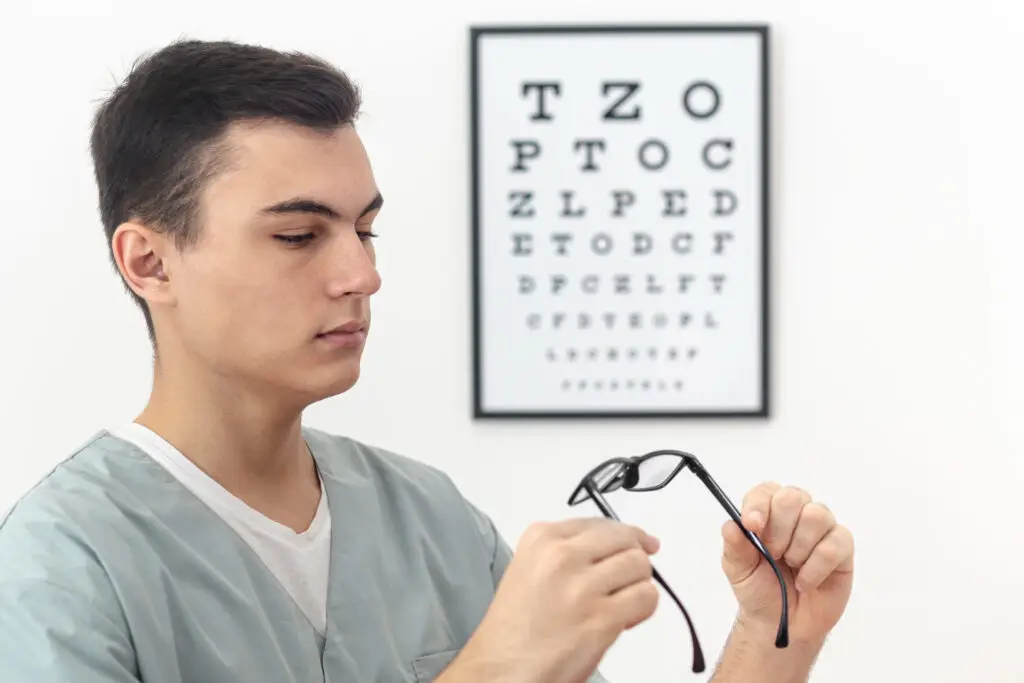Choosing the perfect pair of reading glasses can feel overwhelming, especially with so many options in power, style, and type. Whether you’re new to reading glasses or looking to upgrade to a better fit, understanding the reading glasses power chart is your essential first step.
In this article, we’ll walk you through what a reading glasses power chart is, how to use it effectively, and the differences between low power reading glasses, high power reading glasses, and even specialized tools like a high power magnifying glass. Let’s make eye strain a thing of the past.
Table of Contents

What Is a Reading Glasses Power Chart?
A reading glasses power chart is a simple tool that helps determine the right diopter strength (magnification power) for reading glasses based on your age and current vision needs. It usually ranges from +0.75 to +4.00 and is commonly used to self-diagnose the approximate strength of reading glasses you may need without a prescription.
Typical Power Range in Reading Glasses
| Age Range | Suggested Power |
|---|---|
| 40–45 | +0.75 to +1.00 |
| 45–50 | +1.25 to +1.50 |
| 50–55 | +1.75 to +2.00 |
| 55–60 | +2.25 to +2.50 |
| 60+ | +2.75 to +4.00 |
Note: These values are estimates and should not replace professional eye exams.
Why the Right Power Matters
Using the wrong power glasses can lead to eye strain, blurred vision, and headaches. A reading glasses power chart simplifies your search by providing a visual reference, often including text in various font sizes. You look at the chart from a standard reading distance (typically 14–16 inches) and select the smallest line you can read comfortably.
High Power Reading Glasses: Who Needs Them?
High power reading glasses typically start from +2.50 and go up to +4.00. These glasses are designed for individuals with significant presbyopia, a natural decline in near vision that occurs with age. People aged 60+ often need these glasses to read small text or view details up close.
If you’re struggling with:
- Reading small print on medicine bottles
- Sewing, knitting, or fine handiwork
- Using a smartphone or tablet
Then you might benefit from high-power reading glasses.
Low Power Reading Glasses: A Starter for New Users
If you’re in your 40s or just starting to experience difficulty reading small text, low power reading glasses (typically +0.75 to +1.50) are your best starting point. These glasses help with minor focusing issues and are ideal for occasional use such as reading menus, books, or computer screens.
Many people use low-power reading glasses without even realizing it, especially when they buy generic, over-the-counter reading glasses without checking their diopter level.
High Power Magnifying Glass: A Handy Tool for Precision
While reading glasses are worn on the face, a high-power magnifying glass is a handheld device used for precision tasks. It’s particularly useful for:
- Examining jewelry
- Reading extremely fine print (like legal documents or maps)
- Inspecting electronics or circuit boards
Magnifying glasses come in various powers, typically from 2x to 10x or higher. They’re not a substitute for reading glasses but are an excellent complement for special tasks requiring extra magnification.

How to Use the Reading Glasses Power Chart at Home
- Print the Chart – Ensure it’s printed to scale with accurate font sizes.
- Find Good Lighting – Natural light or a bright reading lamp is ideal.
- Hold It Properly – Position the chart 14–16 inches from your eyes.
- Test Each Eye Separately – Cover one eye and read the chart with the other.
- Pick the Right Power – The smallest line you can read indicates your required diopter.
If you’re still unsure, opt for the lower power and test it for a few days. You can always step up if needed.
Are Reading Glasses and Magnifying Glasses the Same?
No. Reading glasses are corrective lenses worn on the eyes for prolonged reading or screen work. A magnifying glass, especially a high-power magnifying glass, is a temporary tool for close-up inspections. They serve different purposes and shouldn’t be confused.
However, both can be useful in your toolkit. Many users keep a pair of high-power reading glasses for regular use and a magnifying glass nearby for tasks needing extreme close-up detail.
Choosing Between High and Low Power Reading Glasses
Here’s a quick guide:
| Vision Need | Recommended Option |
|---|---|
| Minor blur | Low power reading glasses (+0.75 to +1.50) |
| Moderate blur | Medium power (+1.75 to +2.25) |
| Major blur, small text | High power reading glasses (+2.50 to +4.00) |
| Spot magnification | High power magnifying glass (3x to 10x) |
If your vision fluctuates or you require different magnifications for different tasks, consider owning multiple pairs with varying strengths.
Final Thoughts
Navigating your way through reading aids doesn’t have to be confusing. A reading glasses power chart can simplify the process and save you from trial-and-error purchases. Whether you’re using low power reading glasses for casual reading, switching to high power reading glasses for more intensive tasks, or supplementing your setup with a high power magnifying glass, understanding your needs is key.
Invest in the right solution for your eyes—you’ll not only read better, but you’ll reduce strain, fatigue, and long-term discomfort.
Looking sharp isn’t just about vision—it’s about style too. Use the reading glasses power chart to find your perfect lens strength, then elevate your look with classic ornaments for men that impress




